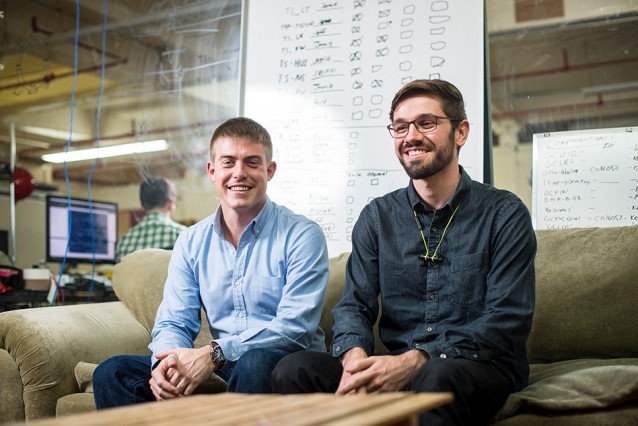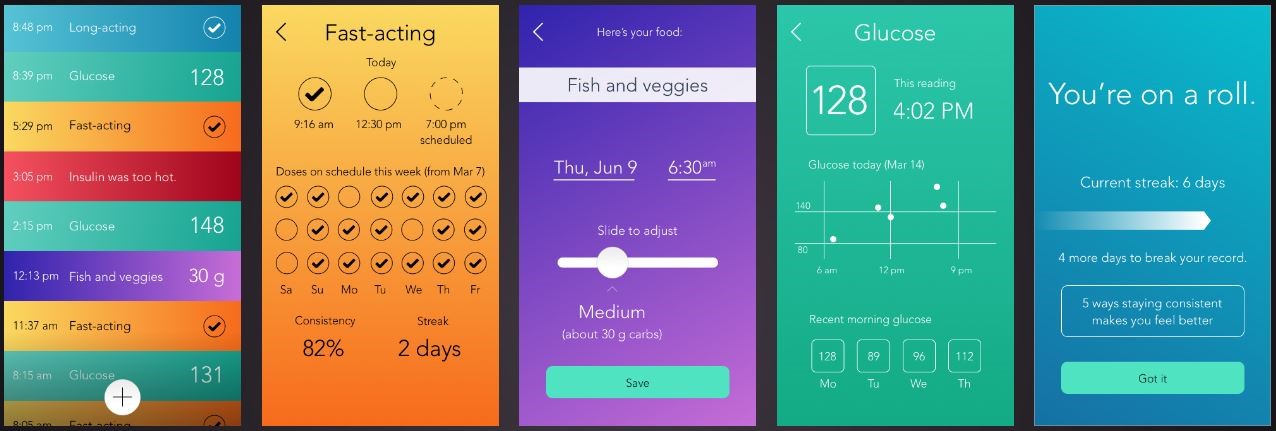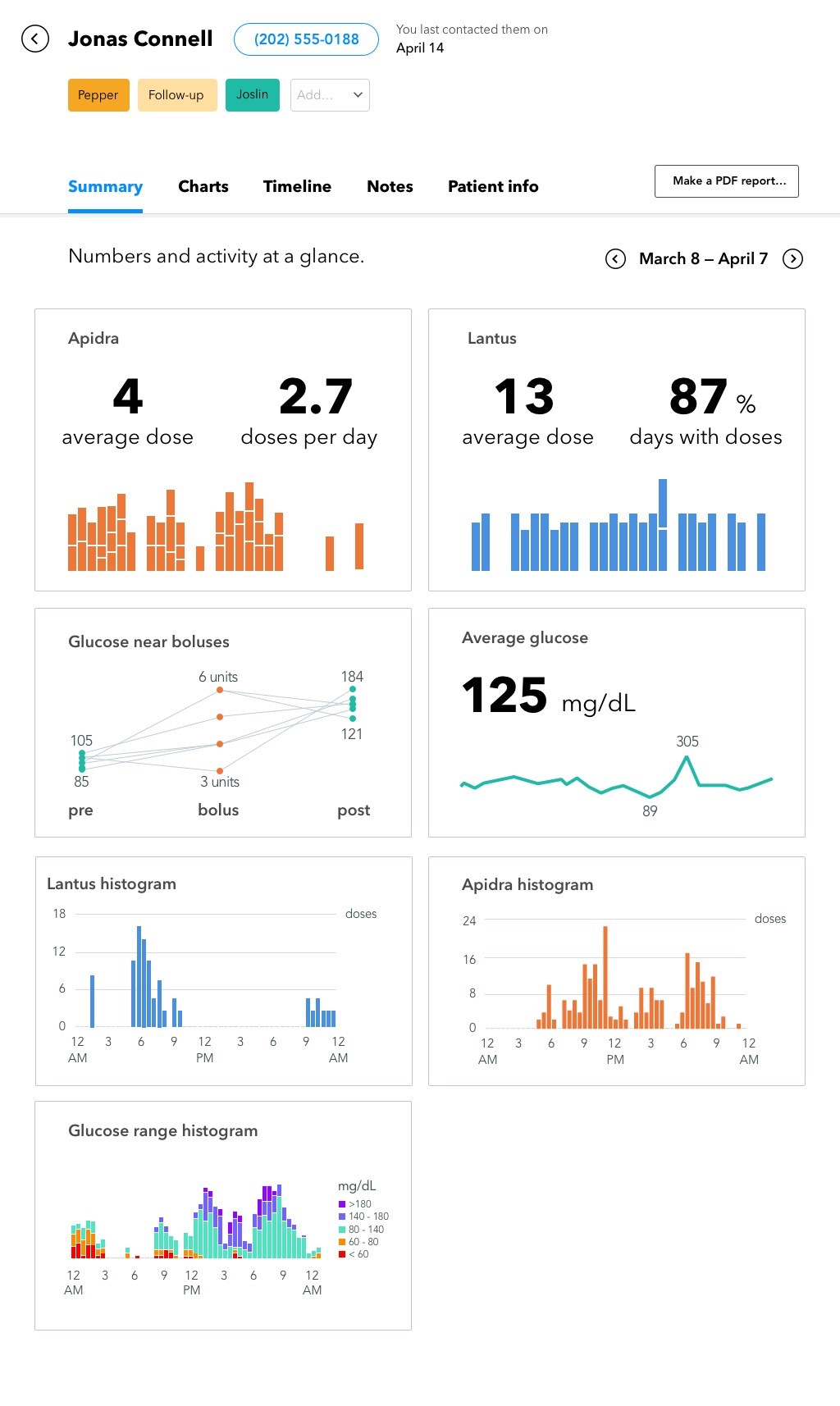There is a silent revolution in the disposable insulin pens market. Series of innovations have led to significantly more patient-friendly products. The latest of them all are smart caps – caps that can be attached to the disposable pen to log data about doses.
Common Sensing, a Cambridge, Massachusetts-based insulin smart cap provider, has a revolutionary product called Gocap that can help bridge a critical gap in the current diabetes healthcare landscape. The firm recently raised $6.6 million in Series A financing led by WaterLine Ventures with participation from Sanofi, Haselmeier, Philips and Qualcomm Ventures. The firm plans on deploying the funds to commercialize Gocap, strengthen their product offering, and develop next-generation hardware.

Co-founders James White (L) and Richard Whalley (R) (Source: MIT News)
Gocap!
Gocap is a smart cap for insulin pens. Apart from measuring the doses, it also creates logs. There is accompanying Gocap App that gives critical insight on usage pattern by the patient such as dosage, time taken, etc apart from showing logged records. The company’s real value lies in the powerful system created by the Smart Cap-App combination. Apart from this, there are a few interesting features such as reminders to help ensure the patient doesn’t miss a dose and provision to manually enter glucose levels and diet. The most critical feature is the ability to share this data with others, especially with healthcare providers and doctors. The product is patented as well as FDA listed.
The product has an interesting history. The company was cofounded in 2012 by two MIT graduates James White and Richard Whalley. After their graduation in 2010, James went on to do his master’s degree at MIT while Richard Whalley was a consultant in the biotech industry. Based on their own experiences, they came to realize data and adherence were serious issues with diabetes patients. They built a Gocap prototype for the MIT Media Lab’s 2012 Health and Wellness Innovation hackathon.

The Gocap device
Upon founding they company, they began to engage with mentors and various industry stakeholders to answer a simple question, “‘How do we make this a product where all those stakeholders can win?”. The answer to this question led to them to current Gocap product. They have tested their product with over 200 patients ranging from 16 to 90 years of age and logged over 10,000 doses. Based on their analysis, they have been able to give feedback to 100% of the users.

Gocap App interface
The Gocap Impact!
Diabetes is a prevalent disease with its patient population steadily increasing. The prevalence in the United Stated grew from 29.1 million people in 2012 to 30.3 million in 2015. At a global level, the International Diabetes Federation expects the number of people with diabetes to increase by 48% from over 425 million in 2017 to 629 million by 2045.
Some studies have found disposable pens to be the most popular administration mode among the insulin using population with over 59% of the 74,399 sample using pens. While this is a significant number, there are many challenges.
Overdosing and underdosing are still serious possibilities with life-threatening outcomes and huge medical costs attached to them. Compliance issues such as missing doses also exist. One of the biggest problems is the data gap between healthcare practitioners and patients about dosing and compliance. What does a patient do once s/he goes back home? This poses an issue during emergency situations and while reviewing the dosage.
Common Sensing solves all of these problems and benefits the entire ecosystem. With the doses being logged and alarm aids, it is easy for the patient to review their activity and stay on track. This reduces the risk of overdosing and underdosing, thereby reducing medical costs attached to them. When a patient visits the hospital for a review or an emergency, the health care providers can make informed decisions based on the shared data. This system makes insulin pens a more patient friendly mode of administration which enables pharma companies to increase their volumes, and insurance companies to save on medi claim outflows arising from complications.

Stats from the Gocap App when shared
Sensing The Landscape
Common Sensing’s revenue model is based on the value it creates in the ecosystem. Rather than charging the patients, they have a $300 per year subscription model which is shared between insurance providers and pharma companies. Common Sensing believes their clients can see a 10x return on investment on their share of the cost. For the $300 that is spent by the two entities, they get the Gocap device, data, reporting and engagement services.
Coming Sensing has been very strategic in its approach. They have strategic tie ups with key players. During their early clinical trial phase, they partnered with Joslin Diabetes Center, Sanofi, and Dexcom. Common Sensing was also part of a digital health strategies initiative by Sanofi and Innovation Health last year.
Given their revenue model, they have strategically aligned themselves with Sanofi. Gocap must be used with Lantus or Apidra, both of which are by Sanofi. By aligning with the world’s second largest firm (2016) in the diabetes segment, Common Sensing has linked part of its future to that of Sanofi’s in the insulin market, which may be a smart move. However, this stream has challenges of its own as it makes the firm vulnerable to competitive headwinds between pharma companies. This may not be a challenge for Gocap in the foreseeable future as it is a new entrant in a large market.
Sanofi and Novo (No. 1) have been engaged in a heated battle for the insulin market with Eli Lilly also in the fray. Novo is working with Glooko on an app as well as other digital services. Eli Lilly is backing Companion Medicals, a competitor based out of San Diego. Companion Medicals’ product is also compatible with Novo’s Novolog.
Common Sensing has also tied up with Haselmeier, a Swiss-based developer and manufacturer of self-injection devices who is also an investor in the company. This will give Common Sensing access to Haselmeier’s existing as well as new customers.
The next few years will be interesting as Common Sensing plans on reaching over 300,000 users by 2020. With a powerful product and strategic partnerships, the company seems to be moving closer towards its goal.
Subscribe to our newsletter



